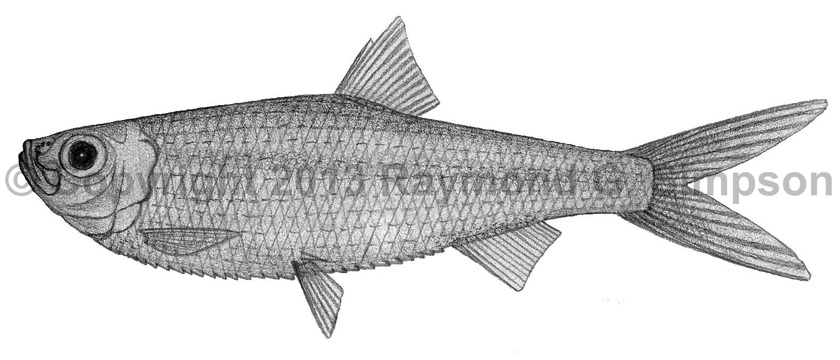
Common Name
Amazon Spinejaw Sprat
Year Described
Steindachner, 1879
Identification
Dorsal Fin:
Anal Fin: 15-18
Pelvic Fin:
Pectoral Fin:
Ventral Scutes:
Gill Rakers:
Lateral Scales: 39-41
Vertebrae: 38-39
Body fusiforme and compressed. Depth of body 25-28% SL. Eye about equal to snout length. Gill cover rounded with no fleshy flaps. Upper jaw without median notch and reaching to eye. Lower jaw projecting. A prominent backward pointing spine on maxilla. Dorsal and ventral profiles convex. Dorsal fin origin centered at about midbody and has a concave margin. Pelvic fin under dorsal fin origin. Anal fin short with origin well behind last dorsal ray. Pectoral fin low on chest. Tail forked. Body scaled. Each scale with paired ridges. Ventral scutes with strong keels.
Color
Body pale yellowish to yellow-green with viscera bright whitish. A faint lateral stripe appears slightly darker. Dorsal fin clear. Tail greenish to yellow with a darker margin. Other fins clear.
Size
Maximum size to 8cm SL but usually 5cm SL.
Habitat
Freshwater rivers and brackish estuaries.
Range
Venezuela to eastern Brazil.
References
Whitehead, P.J.P. 1985. FAO Species Catalogue. Vol. 7. Clupeoid fishes of the world (suborder Clupeoidei). An annotated and illustrated catalogue of the herrings, sardines, pilchards, sprats, shads, anchovies and wolf-herrings. FAO Fish. Synop. 125(7/1):1-303. Rome: FAO.
Other Notes
The validity of the two species of Rhinosardinia has not been confirmed as R. bahiensis is poorly known.